- Cart
- |
- Personal Center
- |





Mid-Infrared TDLAS N2O ppm-level Concentration Analysis System 4.56um
TDLAS (Tunable Diode Laser Absorption Spectroscopy) is a new gas detection method developed based on the combination of a diode laser and a long optical path absorption cell, utilizing the wavelength modulation of the laser through the characteristic absorption region of the measured gas. The semiconductor laser source used in TDLAS technology has a spectral width much smaller than the gas absorption line broadening, resulting in single-line absorption spectra, making TDLAS a high-resolution absorption spectroscopy technique. Nitrous oxide (N2O), also known as laughing gas, is an inorganic compound with the chemical formula N2O. It is a hazardous chemical, a colorless gas with a sweet odor, and acts as an oxidizing agent that can support combustion under certain conditions. However, it is stable at room temperature and has mild anesthetic effects, causing laughter in some cases. When nitrous oxide enters the bloodstream, it can lead to oxygen deprivation, and prolonged inhalation can result in high blood pressure, fainting, and even heart attacks. Long-term exposure to such gases can also cause anemia and damage to the central nervous system. Experimental Instruments: 4.56um High-Power Desktop DFB-QCL Quantum Cascade Laser 2-15um CdHg (MCT) Mid-Infrared Photodetector with Amplification and TEC Mid-Infrared 5-meter Optical Path Short-Wave Broadband Gas Cell
Product features:
Part Number:--
Application area:
Add to Cart Consult Favorite

General Parameters
1. Principle Description
TDLAS (Tunable Diode Laser Absorption Spectroscopy) is a new gas detection method developed by modulating the wavelength of a laser to pass through the characteristic absorption regions of the target gas, based on the combination of a diode laser and a long-path absorption cell.
The semiconductor laser source used in TDLAS has a spectral width much smaller than the broadening of the gas absorption lines, resulting in single-line absorption spectra. Therefore, TDLAS is a high-resolution absorption spectroscopy technique.
Also known as laughing gas, nitrous oxide (N2O) is an inorganic compound, a dangerous chemical with a chemical formula of N2O. It is a colorless, sweet-smelling gas and an oxidizing agent that can support combustion under certain conditions but remains stable at room temperature. It has mild anesthetic effects and can induce laughter.
When nitrous oxide enters the bloodstream, it can lead to oxygen deficiency in the body. Long-term inhalation may cause high blood pressure, fainting, or even heart attacks. Additionally, prolonged exposure to such gases can lead to anemia and central nervous system damage.
Beer-Lambert Law
When a laser beam passes through a target gas with concentration CCC, if the laser wavelength matches the center frequency of an absorption line of the gas, the gas molecules absorb photons and transition to a higher energy level. This results in the attenuation of the laser light intensity in the gas absorption wavelength range.
Wavelength Modulation Spectroscopy
A) Laser Tuning Characteristics
DFB (Distributed Feedback) lasers, with their excellent monochromaticity, narrow linewidth, and frequency tuning properties, are capable of minimizing interference from other background gases. This improves the measurement precision of the detection system, making DFB lasers widely used in gas detection.
B) Harmonic Detection Theory
By applying a high-frequency sine wave signal to the driving voltage of the laser, the current is modulated, causing the output frequency to vary in a sine wave pattern. Additionally, by applying a sawtooth wave voltage to the laser driver, the output wavelength scans across the gas absorption peaks. Using a lock-in amplifier, the harmonic signal is modulated and demodulated to measure the gas concentration.
Principles for Selecting Absorption Lines
When performing gas detection, the selection of absorption lines is crucial. The following factors should be considered: (1) The selected absorption line should have a strong absorption peak for the target gas.
(2) The laser source technology corresponding to the selected absorption wavelength should be relatively mature.
(3) There should be no interference from background gases at the selected absorption line, or the interference should be weak enough to be ignored.
4.56um High-Power Desktop DFB-QCL Quantum Cascade Laser
The 4.56um high-power desktop DFB-QCL quantum cascade laser, developed by Shanghai XiaoXiao Photonics, is a tunable continuous-wave laser with a wavelength tuning range of up to 30nm and a collimated output power of up to 180mW. This laser meets the requirements for gas sensing analysis tests and mid-infrared testing light sources.
The desktop DFB-QCL laser module integrates a digital laser driver, a tunable gain amplifier, a 1f/2f digital lock-in amplifier, an analog output temperature control unit, and allows software-controlled tuning of the laser's temperature and operating current. Our laser provides stable collimated output power and excellent wavelength stability, making it an excellent high-power test light source for the mid-infrared range.
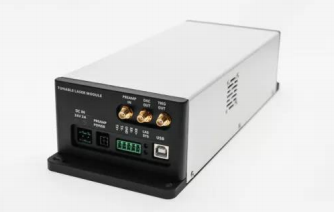
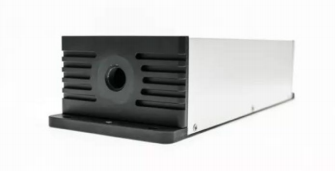
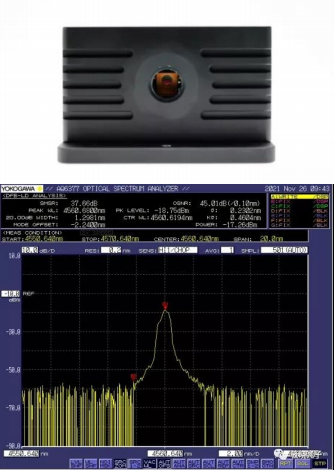
Spectrum
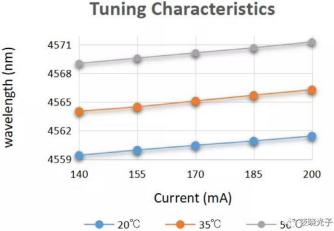
Wavelength Tuning Curve
2-15um HgCdTe (MCT) Mid-Infrared Photodetector with Amplification and TEC:
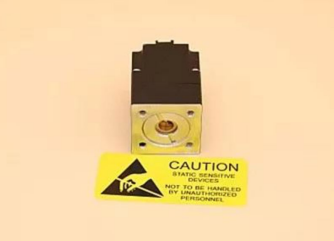
The MCT-15-4TE amplified detector is a thermoelectrically cooled photoconductive HgCdTe (Mercury Cadmium Telluride, MCT) detector. This material is sensitive to the mid-infrared spectrum ranging from 2.0 to 15 μm. The semiconductor thermoelectric cooler (TEC) uses a thermistor feedback circuit to control the temperature of the detector element at -30°C, minimizing the thermal variation's effect on the output signal. For optimal performance, we recommend connecting the output cable (not included) to a 50-ohm terminator. Since the detector is AC coupled, it requires a pulse or chopped input signal. The AC-coupled detector will not detect unchopped DC signals, as it is only sensitive to intensity variations, not the absolute value of intensity.
3.Mid-Infrared 5-Meter Optical Path Length Narrowband Broadband Gas Cell:
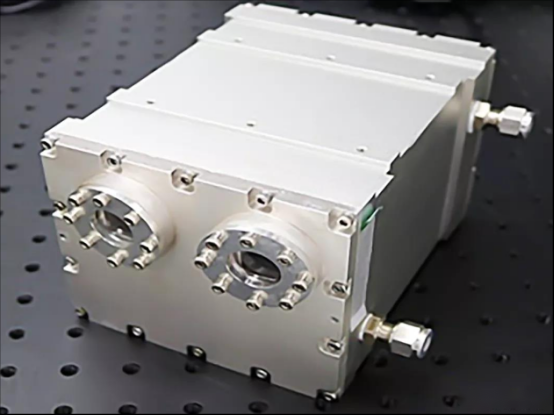
The narrowband broadband gas cell is primarily designed for applications in infrared Fourier and other spectroscopic techniques. The gas cell structure uses a narrowband configuration, with the detection light being a mid-to-far infrared incoherent light source. For high-temperature and corrosion-resistant needs, the gas cell has been developed using special metal materials that have undergone anti-corrosion treatment for both the main body and optical components. It is capable of working stably and reliably in humid and corrosive gas conditions over long periods. It is used for precise measurement and analysis of key gas components, including SO2, NOx, VOCs, NH3, O2, CO, CO2, HCl, and H2O. This technology has broad application prospects in fields such as atmospheric pollutant monitoring, coal combustion flue gas emission monitoring, waste incineration emission monitoring, industrial park pollution monitoring, and industrial online control.
IV. Experimental Test
This experiment uses the 4.56um high-power desktop DFB-QCL quantum cascade laser combined with an MCT mid-infrared photodetector to test the N2O gas (1000ppm) in the 5-meter optical path narrowband broadband gas cell.
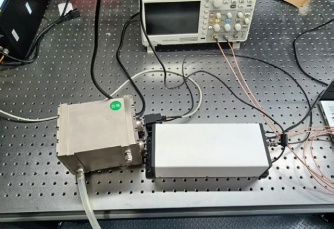
Schematics
Operation Steps:
1.Install the 4.56um QCL laser, align the output to the 5-meter infrared broadband gas chamber.
2.Place the MCT detector at the other end of the 5-meter infrared broadband gas chamber.
3.Connect the BNC output of the MCT detector to the PREAMP input of the 4.56um QCL laser.
4.Use an SMA-BNC cable to connect the oscilloscope to the DACOUT analog output of the 4.56um QCL laser.
5.Use an SMA-BNC cable to connect the oscilloscope to the TRIG OUT trigger output of the 4.56um QCL laser.
6.Turn on the laser and detector.
7.Adjust the software parameters, and observe the second harmonic signal waveform and amplitude on the oscilloscope.
Process Analysis:
Using the control software on the computer, adjust the current and temperature to tune the wavelength, enabling the laser to scan within a specific wavelength range and cover the absorption peaks of the gas. The lock-in amplifier provides a high-frequency sine modulation signal, modulating the output frequency of the laser. The light emitted by the laser passes through the gas absorption chamber, enters the PREAMP input stage of the detector, and is then demodulated by the lock-in amplifier. The signal is output from the DAC OUT analog output to oscilloscope channel 2, displaying the second harmonic signal. During the entire process, we adjust various parameters in the software and simultaneously observe the output waveform to optimize it.
5, Experimental Results:
The second harmonic waveform and modulation parameters are as follows:
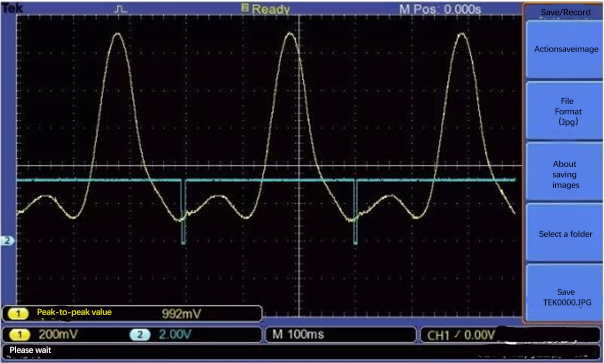
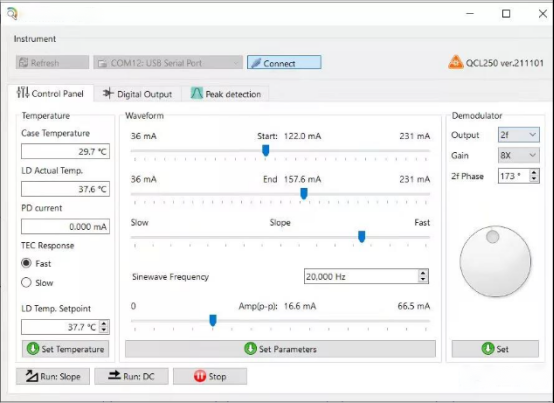
Verification Analysis:
By querying the Hitran database, the absorption spectrum lines within the wavenumber range from 2188.8 cm⁻¹ to 2189.8 cm⁻¹ are as follows:
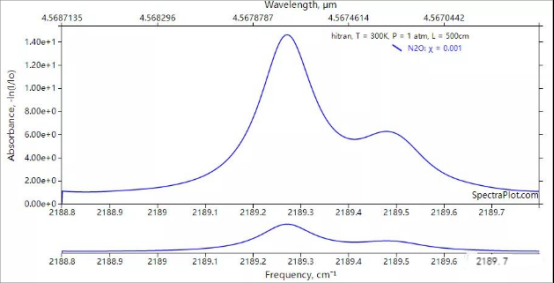
--
⇪